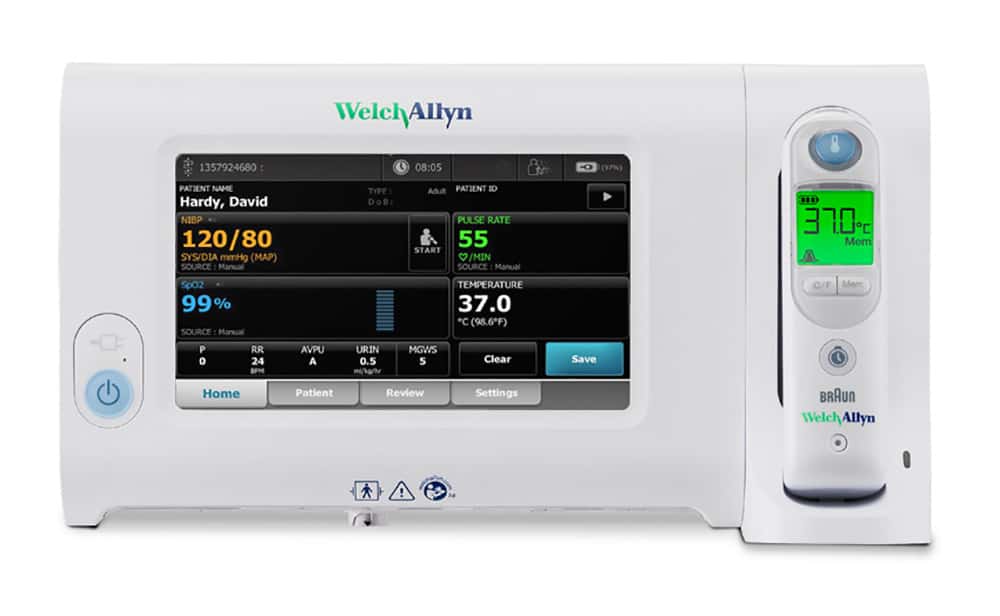Innovative monitors to transform clinical workflow and enhance patient outcomes across the NHS

Diagnostic device specialist Hill-Rom has launched the Welch-Allyn Connex range of monitors to help caregivers detect the early signs of patient deterioration and provide a seamless connection to electronic medical systems.
Hill-Rom launched the new monitors after the secretary for health and social care, Matt Hancock, emphasised the importance of investing in connected solutions for achieving NHS goals in 2018.
Matt Hancock said: “The patient safety agenda is important to me and I strongly believe properly integrated technology has the power further enhance safety and improve outcomes for patients.”
Failure to recognise patient deterioration is a key patient safety issue in the NHS. A study published in BMJ Quality and Safety estimated that around one in 20 deaths in hospital were preventable and of these, approximately 33 percent were estimated to be from insufficient clinical monitoring.
The National Early Warning Score (NEWS) was introduced by the Royal College of Physicians in 2012 in order to provide a clear procedure, aiding staff in timely identification and response to cases of acute patient deterioration.
According to Hill-Rom, the Welch-Allyn Connex monitors’ full compatibility with NEWS regulations puts them in line with current NHS developments, ensuring they are future-proof.
Measurements from these devices are electronically processed, allowing for deteriorating patients to be recognised automatically. An early warning score and escalation instruction also appears on-screen, indicating necessary actions to caregivers without needing to step away from the patient’s side.
In a study recording the implementation of Welch-Allyn Connex vital signs monitors at the Imperial College Healthcare Trust, staff saw multiple benefits, including:
- Electronic charting of vitals took around one minute 12 seconds, compared to two minutes 35 seconds using traditional paper charting methods.
- Increased data accuracy — Traditional methods of recording vital signs on paper or manual transcription into electronic medical records saw error occurrence as high as 17 percent. Automatic capturing of vitals reduced the likelihood of transcription errors and incomplete records due to manual input.
- Automatic, rapid reporting and clear traceability of results — increasing visibility of patient vitals across the trust.
- Immediate transferral of data directly from the observation machine, reducing time wasted and safety issues caused by lack of access to staff PCs or tablets.
Hill-Rom also recently announced a collaboration with Microsoft, developing the Azure platform to bring together advanced actionable care data and solutions to caregivers. This integrates data collected across Hill-Rom devices, including the company’s smart hospital beds and Welch-Allyn Connex Monitors.
This network of integrated solutions is compatible with existing record systems within the NHS, streamlining the introduction of new technology into healthcare trusts and making it simpler and more cost-efficient.
Gavin Richards, Marketing Director at Hill-Rom, commented: “With Hill-Rom’s rich heritage of developing technology that improves patient safety, healthcare providers can be sure that they are working with one trusted vendor across their connected platforms.
“With our range of innovative solutions, clinicians can record critical and secure information at the bedside. Instantly delivering actionable insights to caregivers, we can reduce costly complications and enhance patient outcomes.”
Hill-Rom is a global medical technology company with more than 10,000 employees worldwide.

